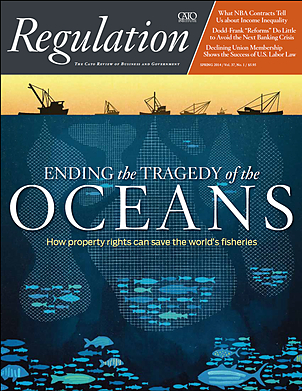
New England fishermen and other opponents of the plan fear that the restrictions will doom the centuries-old local fishing industry. Plan proponents, however, counter that the measures are the only way to save the rapidly collapsing Atlantic cod industry. Unfortunately, even these severe new limits may be too little, too late. The latest measures follow years of mismanagement, overly optimistic stock estimates, and misguided fishery policies that failed to align the economic interests of the fishing community with the long-term sustainability of the fishery. In the 1990s, for example, the fishery stock assessments indicated that short-term catch limits and fishing effort reductions could rebuild the fishery stock and ultimately lead to higher long-term yields. Nevertheless, local fishermen and their political representatives vehemently opposed any such reductions.
It would be easy to attack New England fishermen for being short-sighted. To do so, however, would ignore the incentives they face—incentives created by the existing regulatory structure. Incumbent fishermen have little incentive to agree to catch reductions because they would be unlikely to capture the full value of the rebuilt stocks. A rebuilt stock would encourage inactive trawlers to resume fishing and active trawlers to increase their fishing intensity.
Proper fishery management can both conserve fisheries and maintain their value. One approach long recommended by economists has been the use of property rights in fisheries through territorial or catch-share allocation among fishery participants. The ability of such methods to enhance economic efficiency is no longer a matter of academic speculation or economic theory. There is ample empirical evidence that such institutional reforms encourage more efficient fishery exploitation, reduce overcapitalization, and eliminate the dreaded “race to fish”—the wasteful and dangerous effort to catch as many fish as possible in a very short fishing season. The use of property-based management aligns fisher incentives with the underlying health of the resource and appears to reduce the adverse environmental effects of commercial fishing.
Click here to continue reading the full article in Regulation.




